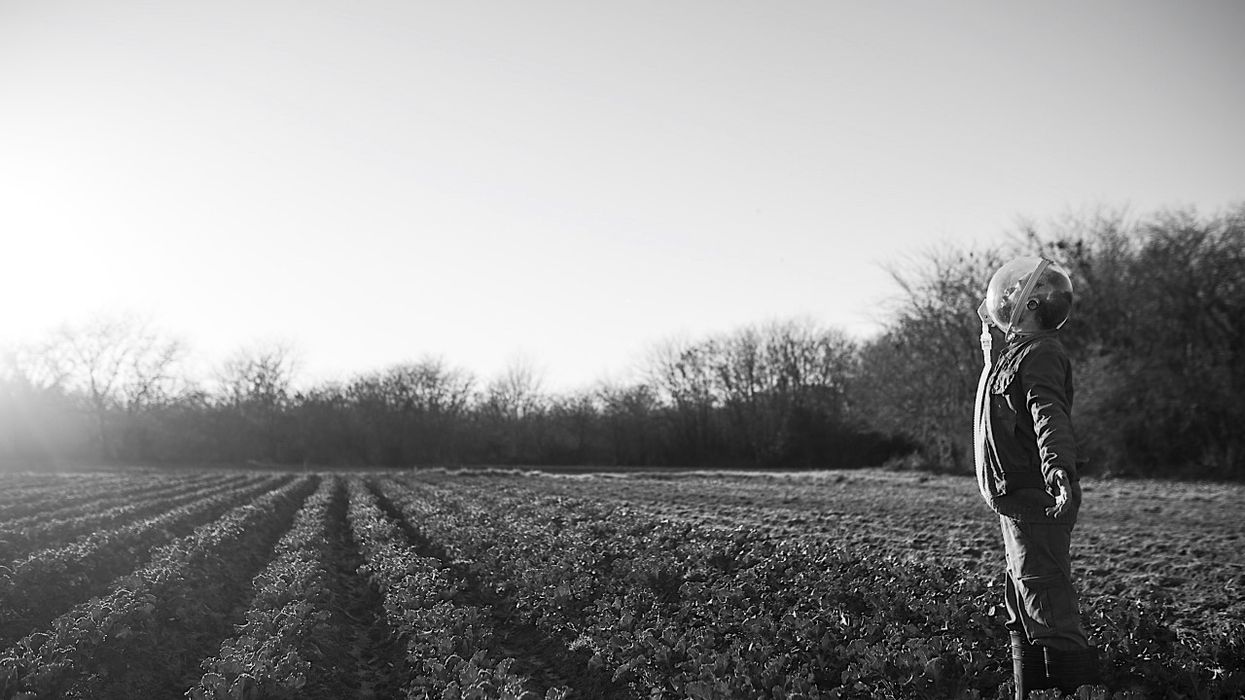Are Black and White Movies Making a Comeback?
Several filmmakers went monochrome at Sundance 2021, and here are four good reasons why.

Some of the best films in cinema history were shot in black and white. In the 1920s and 1930s, directors and DPs did incredible work shaping stories with light and dark.
But back then, black and white was the only option. Once Hollywood went technicolor, they never went back. Over a few decades, audiences came to see black and white as old-fashioned.
Now that we’re further away from that period of technological innovation, can black and white mount a comeback? Can it occupy the same competitive edge for audience attention as color? Can you actually get funding to shoot in black and white?
At the 2021 Sundance Film Festival, the program abounds with several films that opted to go down this route—and for good reason.
Here’s a look at four Sundance 2021 films that shot in black and white, with four answers to the question, "Why?"

Because it transports you to classic cinema and subverts it
Filmmaker Rebecca Hall knew she would shoot her film Passing in black and white, and in 4:3-aspect-ratio, from the very beginning of the process. Why?
“I had a strong feeling it needed to be black and white even 13 years ago during the first adaptation,” said Hall during the Q&A after the film's Sundance premiere.
Passing is an adaption of Neila Larsen’s 1929 psychological thriller about two Black women who can “pass” as white, but who have chosen to live on opposite sides of their racial identity. Hall wanted to use both 4:3 aspect ratio and black and white to harken back to classic Hollywood cinema, but put two women of mixed race, who would never have been given leads in that period's Hollywood movies, in that frame.
“My reasoning is that it felt illuminating. It was not just a stylistic choice, but a conceptual choice. I made a film about colorism. Black and white drains color out.”
Because it hyper focuses you on the main character
In her film The Dog Who Wouldn’t Be Quiet, Ana Katz creates a non-traditional story around an offbeat character in Sebastian, who must figure out how to navigate a weird new world of rules under a pandemic. (The film was conceived before COVID, by the way!)
So how to put together a surreal near-distant reality that focuses entirely on the main character? Employ black and white.
“It was more of an intuitive decision; I wanted it to feel more intimate, with fewer distractions,” she explained in an interview about her visuals, including a PPE-like bubble helmet worn by the main character to the store. “I shot this over the course of three years, before the pandemic struck, so it’s not as if I knew COVID-19 would happen.”

Because it captures the mythology you’ve been shooting since the beginning
Jessica Beshir began filming in Ethiopia over 11 years ago as a journey to reconnect with the hometown and country she had to flee as a child. And she knew from the beginning that the journey would be in black and white. (You can see Beshir’s short film, Hairat, below and listen to her speak about her making it in our No Film School Podcast here.)
In her feature Faya Dayi, her film functions like an intoxicating dream where every frame is a painting.
“The whole film was me reflecting what the people were giving me, so if the film feels like a poem, it reflects the love affair I was having reconnecting with my people and my country,” explained Beshir in the Q&A after the film's Sundance premiere.
“The black and white was conceptual to begin with. The first short film I made was in black and white. I was thinking about this concept of the mythical part within the film. They talk about ‘lights in the night of darkness.’ We talk about love and fear. For me, the black and white was a way to reflect that.”

Because black and white suits the feeling of the location (and your budget!)
Filmmaker Amalia Ulman chose to shoot her dark comedy El Planeta in black and white first to cover up her microbudget. Black and white can conceal what color can betray in how the color profile is seen in the cameras you can afford, the sets and costume design, as well as the lighting and color grading.
These potential distractions can be thwarted by switching to black and white. Additionally, it suited the concept of the setting of the city of Gijon, Spain.
“It looks black and white, even when you shoot in color,” said Ulman in an interview pre-fest.
What do you think black and white brings to a film? Let us know in the comments!
Can’t take part in this year’s festivities? Check out the rest of our 2021 Sundance Film Festival coverage here.

 "'Back Home"via Mercedes Arutro
"'Back Home"via Mercedes Arutro 'Back Home'via Mercedes Arutro
'Back Home'via Mercedes Arutro 









